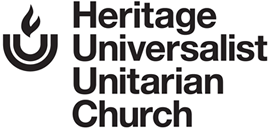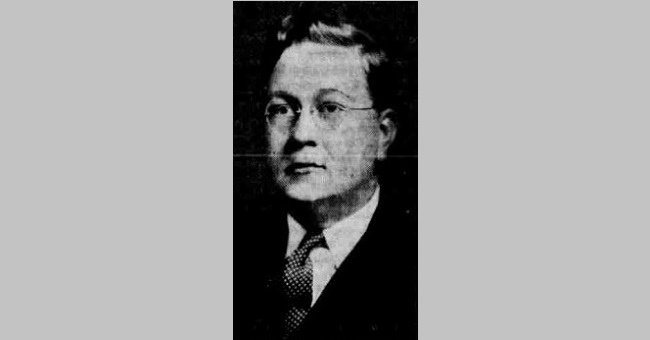The Stories of 42 Ministers Who Have Served Our Church
by Mike Roberts, Church Historian
As Robert Cummins left and Carl Olsen joined the Cincinnati fold, the country was in the depths of a deep depression. War clouds were on the distant horizon and spiritual leadership was of the utmost importance.
Carl Harold Olson
Carl Olson was born in Quincy, Massachusetts in 1905. He graduated from Tufts College and came to Cincinnati in 1933 after serving as a minister in Kent, Ohio. He served for six years and was very active in the city social service community. He volunteered for the Community Chest. He was chairman of the Church and Social Work division of the Council of Social Service Agencies. He was a member of the management board for the Eastern Hills YMCA. He was also a member and officer in a number of Universalist state and national organizations.
Reverend Olson detailed a typical week in 1936 as representative of his ministry. He delivered one Sunday sermon, two radio addresses and one church school lesson. He attended four to five committee and organizational meetings, made seven pastoral calls and attended five conferences. In addition, there were an inestimable number of phone calls, letters, bulletins and incidental tasks.
While in our city, he helped organize the 110th anniversary celebration of the founding of our church. There was a full week of activities, articles were written for the local papers and the church history was much revered.
Olson left Cincinnati in 1939 to become minister of the Church of the Redeemer in Minneapolis, which later became the First Universalist Church of Minneapolis. He stayed there until retirement in 1963 and passed away two years later.
Ralph Pierre Boyd
Succeeding Carl Olsen on January 5, 1940, was Reverend Ralph Boyd. He came to our church from Alabama but his roots were in Akron, Ohio. He attended a Universalist Church there and eventually trained for the ministry with encouragement from his local minister. Boyd’s stay in Cincinnati was brief. He had a strong desire to serve as a chaplain in the U. S. Army and made application. He was accepted for duty and requested that he be given a one-year leave from our church to serve in the army. That request was denied and he left in July 1941. War intervened and he remained in the chaplain corps until the end of the war.
Attempts to discern where Boyd served have been fruitless. It is known that in 1943 it was arranged between BBC and WCPO that he do a live broadcast back to Cincinnati to report on the war. The broadcast originated in England. Boyd left the service with a rank of major. It is known that he served a Universalist Church in Nashua, New Hampshire from 1947 to 1950. He died in 1979 and is buried in St. Augustine, Florida.
Kenneth Revilo Hutchinson
Reverend Kenneth Hutchinson at age 32 took the lead of our flock on December 14, 1941. This had to be a difficult installation coming exactly one week after Pearl Harbor. He came to the church from one in Dexter, Maine. He had received a strong recommendation from Robert Cummins for whom he served as assistant minister at Throop Church in Pasadena.
Hutchinson served the Essex Street congregation for a little over two years, through the worst of the world war. A number of our congregation joined the armed services and worried families had to be at the top of his priorities.
Reverend Hutchinson moved on to a new ministry Brattleboro, Vermont in January of 1944 and eventually served three more congregations before retiring from the Universalist Church of Verduga Hills, La Crescenta, California. He died in California in 2005.
George H. Thorburn
George Thorburn came to the First Society in February 1944 from Arlington, Virginia. He was serving with the Universalist Institute for International Relations. He had experienced two ministries during his career but also had held several administrative positions with the national church. Thorburn attempted to increase participation and membership in the church by utilizing a Five-Year Plan devised by national superintendent Robert Cummins. That plan included five goals. 1) Rededication to the Moral, Ethical and Spiritual Tenets of the Faith; 2) Enlistment Through the Whole Life of the Church which included missionary work and recruitment of new members; 3) Stewardship in support of the church budget and contributions to the United Appeal; 4) Outreach which was interpreted by our church as leaving the Walnut Hills site; 5) Crusade toward understanding Universalism. As early as 1947, Thorburn was expressing dismay that the church had made so little progress in achieving these goals.
The other major undertaking of Thorburn during these years was merging the congregation of City Temple with our church. He worked closely with Reverend Harry G. Hill to bring the two congregations together, a challenging task in that City Temple was a liberal local church unaffiliated with any national church.
Unfortunately, both tasks were left somewhat unfinished as Thorburn became seriously ill and passed away on June 25, 1949. His death must have been unexpected as he had outlined all his plans for the rest of 1949 at the June Board of Trustees meeting. He is the only minister of our church to die while serving the church.
Jack T. Akin
It took 11 months to replace Reverend Thorburn with Reverend Jack Akin. The new minister had come from a far different background than his predecessors with the First Society. He was trained in Alabama as a Baptist minister and had served for six years at the First Baptist Church of Monroe, North Carolina and at a Baptist Church in Campbellsburg, Kentucky.
Akin’s biggest challenge was guiding the church through its recent merger with the City Temple. He worked with the retired minister of that church, Harry G. Hill, to create a smooth transition for both churches. However, his stay with the church was brief. After 1 1/2 years, he resigned and moved back to Alabama. He passed away in 1982 in Broward County, Florida.
Image: Rev. Carl H. Olson
Image source: Cincinnati Public Library

